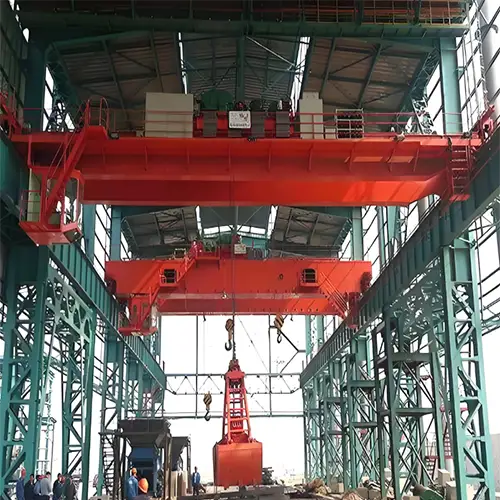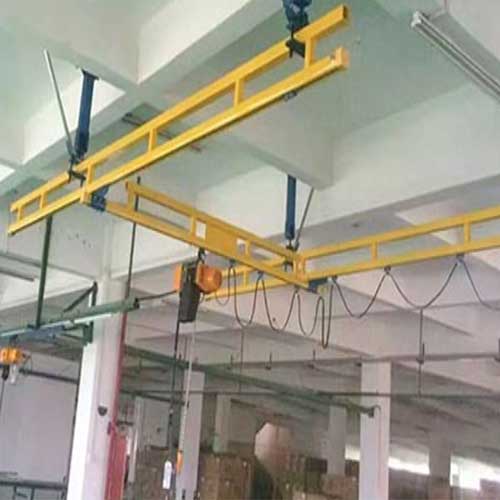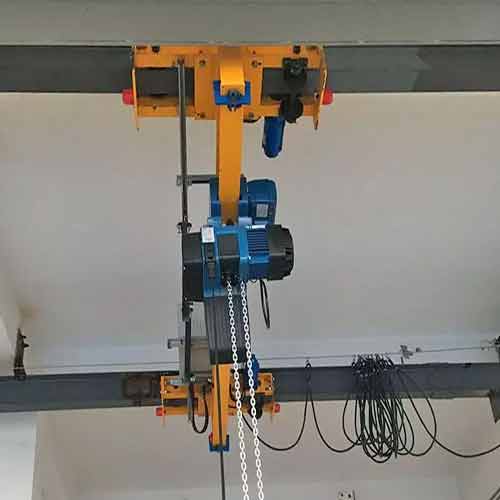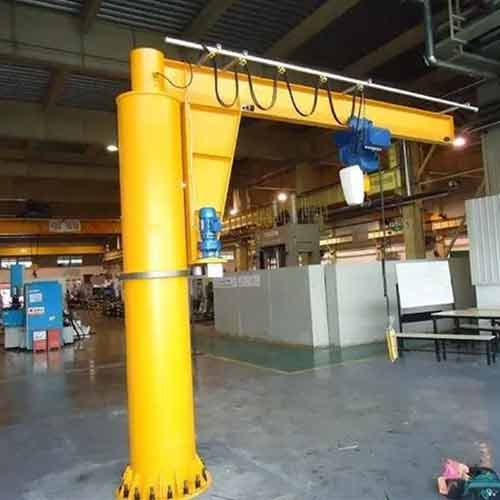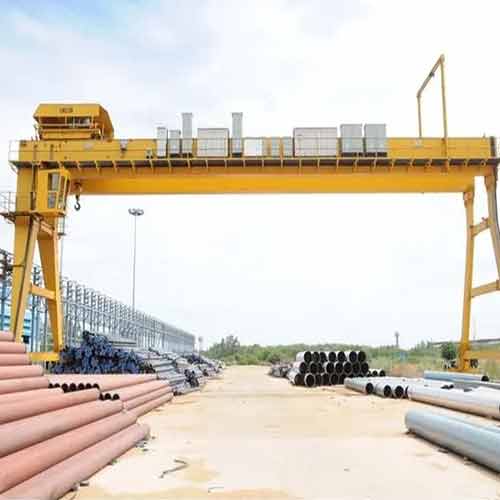Overehad Electric Crane Systems for Wood Combustion Facilities
Electric overhead crane for sale. Custom overhead electric crane systems in wood combustion facilities for efficient material handling and operational safety.
Category: Crane System
Your Trusted Electric Crane Manufacturer & Supplier
Overehad Electric Crane Systems for Wood Combustion Facilities
Electric overhead crane for sale. Custom overhead electric crane systems in wood combustion facilities for efficient material handling and operational safety.
Wood combustion facilities play a crucial role in converting wood waste into energy, contributing to sustainable energy solutions. These facilities process various types of wood, including chips, logs, and other biomass, which requires efficient material handling to ensure smooth operations.
Efficient material handling is vital in maximizing productivity and minimizing downtime. Proper management of incoming raw materials, processing, and byproducts is essential for maintaining a seamless workflow. This is where electric crane systems come into play.
Electric cranes enhance operational efficiency by providing precise control and reliability in lifting and moving heavy loads. Their ability to handle various materials, from bulk wood to processed products, makes them indispensable in wood combustion facilities. By integrating electric crane systems, facilities can improve safety, reduce labor costs, and optimize the overall handling process, ultimately contributing to a more efficient and sustainable operation.
Electric Crane Systems
Electric crane systems are specialized machines designed to lift and move heavy loads with precision and efficiency. They play a vital role in various industrial applications, including wood combustion facilities, where they streamline material handling processes. Let's delve deeper into the components and types of electric cranes used in these facilities.
Definition and Components of Electric Crane Systems
Electric crane systems consist of several key components that work together to lift and transport materials safely. These components include:
- Electric Hoists: The hoist is the primary lifting mechanism of an electric crane. It uses an electric motor to lift heavy loads vertically. Electric hoists can vary in design, including wire rope or chain types, and are chosen based on the specific lifting requirements and load capacities needed for wood combustion facilities.
- Control Systems: Control systems are essential for operating electric cranes. They allow operators to manage the crane's movements, including lifting, lowering, and horizontal travel. Modern control systems often incorporate user-friendly interfaces, remote controls, and safety features, ensuring precise and safe operations.
- Power Supply and Distribution: Electric cranes require a reliable power supply to function effectively. This can involve fixed wiring systems, overhead power lines, or battery-operated systems, depending on the facility's layout and needs. Proper power distribution ensures that the crane operates smoothly without interruptions, which is critical in maintaining workflow efficiency.
Types of Electric Cranes Suitable for Wood Combustion Facilities
Wood combustion facilities benefit from several types of electric cranes, each designed to handle specific tasks and loads. The most common types include:
- Electric Bridge Cranes: These cranes consist of two parallel runways with a bridge that moves along them. They are highly versatile and can cover large areas, making them ideal for receiving and storage areas in wood combustion facilities. Bridge cranes can lift heavy loads, such as bulk wood chips or logs, and are often equipped with advanced hoists for enhanced performance. Customized electric overhead crane with grab bucket and explosion proof electric overhead cranes are also provided.
- Electric Jib Cranes: Jib cranes feature a horizontal arm (or jib) that extends from a vertical post, allowing for a wide range of movement. They are well-suited for maintenance shops and processing workshops, where they can easily maneuver around equipment and tools. Jib cranes are excellent for lifting lighter loads, typically up to 1 ton, and provide flexibility in confined spaces.
- Electric Gantry Cranes: These cranes operate similarly to bridge cranes but are mobile and often have wheels, allowing them to move around the facility. Gantry cranes are particularly useful in energy recovery sections, where they handle ash and other byproducts. Their design allows for lifting heavier loads while maintaining stability, making them a valuable asset in wood combustion facilities.
These components and types of electric crane systems is crucial for optimizing material handling processes in wood combustion facilities. By selecting the right crane for each application, facilities can improve efficiency, enhance safety, and ensure smooth operations across their workflows.
Application of Electric Cranes in Wood Combustion Facilities
Electric cranes are integral to the smooth operation of wood combustion facilities, where they facilitate the efficient movement and handling of materials at various stages of the process. Let's explore how these cranes are applied, the common workshops where they are utilized, and the specific roles they play in material handling.
Are Electric Cranes Used in Wood Combustion Facilities?
Yes, electric cranes are extensively used in wood combustion facilities. Their ability to lift and transport heavy loads safely and efficiently makes them indispensable for managing the various types of materials involved in the wood processing cycle. From receiving raw materials to processing and recovery operations, electric cranes enhance productivity and safety in these environments.
Common Applications and Roles in Material Handling
In wood combustion facilities, electric cranes serve several key functions, including:
- Receiving Raw Materials: Electric cranes help unload and transport wood chips, logs, and other biomass from delivery trucks to storage areas.
- Processing Operations: They move processed materials between different stages of production, ensuring a continuous flow of operations.
- Maintenance Tasks: Cranes are used to lift tools and equipment, facilitating quick maintenance and repairs.
- Energy Recovery: In energy recovery sections, cranes manage the handling of byproducts, such as ash, ensuring proper disposal or repurposing.
Typical Workshops Where Overhead Cranes Are Utilized
Electric cranes find their applications in various workshops within wood combustion facilities, each serving distinct functions:
Receiving and Storage Areas
In receiving and storage areas, electric cranes are crucial for unloading bulk wood materials. They lift heavy logs and wood chips from transport vehicles and place them in storage locations. Key features include:
- Design: Typically equipped with bridge cranes that span large areas to optimize space.
- Load Handling: Capable of handling loads weighing up to 10 tons, accommodating large quantities of materials.
- Special Considerations: Must be designed for high durability to withstand outdoor conditions and dust exposure.
- Click to check more information on log handling cranes, and cutomized electric log handling crane are provided.
Processing Workshops
Processing workshops require cranes that can move materials between different processing stages, such as chipping, grinding, and drying. Electric cranes in this setting:
- Design: Often utilize single girder cranes for flexibility and ease of movement around machinery.
- Load Handling: Typically handle loads of 1 to 5 tons, including processed wood products and equipment.
- Special Considerations: Features like dust resistance and precise control are important to ensure safe and efficient operations.
Maintenance Shops
In maintenance shops, electric cranes play a critical role in ensuring that tools and equipment are readily accessible. Their applications include:
- Design: Jib cranes are commonly used due to their compact size and versatility.
- Load Handling: Generally lift lighter loads, usually up to 1 ton, including tools and spare parts.
- Special Considerations: Need to provide flexibility for various maintenance tasks and easy access to machinery.
- Click to check main types of maintenance cranes for your selection.
Energy Recovery Sections
In energy recovery sections, electric cranes are vital for managing byproducts of the combustion process, such as ash. These cranes:
- Design: Often employ gantry cranes that can navigate around the facility and handle large volumes of material.
- Load Handling: Typically handle loads weighing between 2 to 8 tons, depending on the material.
- Special Considerations: Must be designed to withstand high temperatures and potential corrosive materials.
Overall, electric cranes are essential in wood combustion facilities, enhancing operational efficiency, safety, and workflow management across various workshops. Their application ensures that materials are handled effectively at each stage of the wood processing cycle, contributing to the facility's overall productivity.
Typical Crane Designs for Each Workshop in Wood Combustion Facilities
In wood combustion facilities, the design of electric cranes varies by workshop, tailored to meet the specific material handling needs of each area. Here, we will focus on the crane design utilized in the receiving and storage areas.
Typical Crane Designs for Receiving and Storage Areas
In the receiving and storage areas of wood combustion facilities, efficient material handling is crucial for maintaining a steady supply of raw materials. The cranes used in these zones are specifically designed to accommodate the volume and type of materials processed.
Design: Double Girder Overhead Cranes
Double girder overhead cranes are the preferred choice for receiving and storage areas due to their robust construction and capacity to handle heavy loads. This design features two parallel girders that support the crane's bridge, allowing for greater stability and lifting capacity.
Typical Loads: Bulk Wood Chips, Logs
These cranes primarily handle bulk wood chips and logs, which are the raw materials for the combustion process. The efficient movement of these materials is essential to prevent delays in production and ensure a continuous supply.
Load Weights: 1-10 Tons
Double girder overhead cranes are capable of lifting loads ranging from 1 to 10 tons, accommodating the weight of large logs and significant volumes of wood chips. This capacity ensures that facilities can handle their material needs without interruptions.
Special Features: High Lifting Speeds, Automated Controls
To enhance efficiency, double girder overhead cranes are often equipped with high lifting speeds, allowing for quick loading and unloading of materials. Automated controls further streamline operations, enabling operators to manage crane movements with precision and ease. Features like remote control operation can also improve safety by keeping operators at a safe distance from the lifting area.
Considerations: Space Optimization, Load Distribution
In the design and implementation of these cranes, space optimization is a critical factor. Given the layout of receiving and storage areas, cranes must be positioned to maximize available space while ensuring smooth access to materials. Proper load distribution is also vital; cranes should be designed to evenly distribute the weight of heavy loads to prevent undue stress on the structure and enhance safety during operations.
By incorporating these design elements, double girder overhead cranes in receiving and storage areas significantly enhance the efficiency of material handling in wood combustion facilities. Their ability to manage heavy loads with speed and precision is essential for maintaining productivity and operational effectiveness.
Typical Crane Designs for Processing Workshops
In processing workshops within wood combustion facilities, electric cranes are essential for efficiently moving materials between various stages of production. The design of these cranes is tailored to meet the unique demands of processing tasks.
Design: Single Girder Cranes
Single girder cranes are commonly used in processing workshops due to their compact and efficient design. This crane features a single main girder supported by end trucks, providing a lightweight yet strong structure that allows for easy maneuverability within confined spaces.
Typical Loads: Processed Wood Products, Machinery Components
These cranes are responsible for handling processed wood products, such as pellets or boards, as well as machinery components used in the processing operations. Their versatility makes them ideal for the dynamic environment of a processing workshop.
Load Weights: 1-5 Tons
Single girder cranes typically handle loads ranging from 1 to 5 tons. This capacity is well-suited for the types of materials processed in this area, ensuring that the crane can manage various weights without compromising safety or efficiency.
Special Features: Precision Control, Safety Sensors
To enhance operational efficiency and safety, single girder cranes are often equipped with precision control systems that allow operators to make accurate movements. Safety sensors, including overload protection and limit switches, help prevent accidents by ensuring the crane operates within safe parameters.
Considerations: Dust and Humidity Resistance
Processing workshops often experience dust and humidity due to the nature of wood processing. Therefore, it's crucial for single girder cranes to be designed with resistance to these environmental factors. This may include using protective coatings on components and ensuring that electrical systems are adequately sealed to prevent damage from dust and moisture.
By utilizing single girder cranes in processing workshops, wood combustion facilities can effectively manage the handling of processed materials while prioritizing safety and efficiency. Their design and features make them an invaluable asset in optimizing production workflows.
Typical Crane Designs for Maintenance Shops
In maintenance shops within wood combustion facilities, electric cranes play a vital role in facilitating quick access to tools and spare parts. The design of these cranes is focused on enhancing maneuverability and flexibility to accommodate the dynamic needs of maintenance tasks.
Design: Jib Cranes
Jib cranes are the preferred choice in maintenance shops due to their compact design and ease of use. Featuring a horizontal arm (jib) that extends from a vertical post, these cranes allow for efficient lifting and movement of materials within a limited space.
Typical Loads: Tools, Spare Parts
In maintenance shops, jib cranes are primarily used to lift tools and spare parts essential for equipment repairs and servicing. This helps minimize downtime and ensures that maintenance teams can quickly access the items they need.
Load Weights: Up to 1 Ton
Jib cranes in maintenance shops typically handle loads weighing up to 1 ton. This capacity is suitable for lifting various tools and components commonly used in maintenance operations, allowing for efficient material handling without overloading the crane.
Special Features: Maneuverability, Flexibility
One of the standout features of jib cranes is their exceptional maneuverability. Their ability to rotate and extend horizontally makes them ideal for working around machinery and in tight spaces. This flexibility allows maintenance personnel to position the crane exactly where it's needed, enhancing operational efficiency.
Considerations: Accessibility and Workspace Constraints
When implementing jib cranes in maintenance shops, accessibility and workspace constraints are critical considerations. These cranes should be positioned to allow easy access to the equipment being serviced while minimizing obstructions. Ensuring that the crane's reach complements the layout of the workshop is essential for maximizing efficiency and safety during maintenance tasks.
By incorporating jib cranes into maintenance shops, wood combustion facilities can significantly improve their maintenance operations, ensuring that tools and spare parts are readily available while promoting a safe and efficient working environment.
Typical Crane Designs forEnergy Recovery Sections
In the energy recovery sections of wood combustion facilities, electric cranes are crucial for managing the handling of byproducts such as ash. The design of these cranes is tailored to meet the specific challenges of this environment.
Design: Gantry Cranes
Gantry cranes are commonly used in energy recovery sections due to their robust and versatile design. These cranes consist of a framework with two vertical legs and a horizontal beam, allowing them to move along tracks and easily navigate around the facility.
Typical Loads: Ash and Byproduct Handling
In this section, gantry cranes primarily handle ash and other byproducts resulting from the combustion process. Efficiently managing these materials is vital for maintaining cleanliness and optimizing recovery operations.
Load Weights: 2-8 Tons
Gantry cranes typically handle loads ranging from 2 to 8 tons, which is well-suited for the weight of ash and other bulk materials. This capacity allows them to manage significant volumes efficiently while maintaining operational safety.
Special Features: Specialized Grips for Bulk Materials
To facilitate the handling of bulk materials, gantry cranes are often equipped with specialized grips or attachments designed for securely lifting ash and other byproducts. These features enhance operational efficiency by ensuring safe and effective handling.
Considerations: High Temperature and Corrosive Environments
Energy recovery sections can expose cranes to high temperatures and potentially corrosive materials. Therefore, it's essential to design gantry cranes with materials and coatings that withstand these harsh conditions. Proper insulation and protective measures should be implemented to ensure the longevity and reliability of the cranes in such environments.
By utilizing gantry cranes in energy recovery sections, wood combustion facilities can effectively manage byproducts while ensuring safety and efficiency in their operations. These cranes are designed to meet the specific needs of handling bulk materials, contributing to the overall productivity of the facility.
Key Considerations for Electric Crane Systems
When implementing electric crane systems in wood combustion facilities, several key considerations must be addressed to ensure optimal performance, safety, and compliance. This chapter delves into critical factors that influence the effectiveness of these systems.
Load Capacity and Specifications
Understanding the load capacity and specifications of electric cranes is essential for selecting the right equipment. Each crane must be capable of handling the specific weights and types of materials processed in wood combustion facilities. Careful analysis of typical loads ensures that cranes operate efficiently and safely within their designated limits.
Detailed Analysis of Typical Loads in Wood Combustion Processes
A thorough analysis of typical loads in wood combustion processes is crucial for crane selection and operational planning. Common loads include raw wood, processed products, machinery components, and byproducts like ash. Each load type has unique characteristics that affect handling requirements, including weight, volume, and shape.
Working Environment Factors
The working environment significantly impacts the design and functionality of electric crane systems. Factors to consider include:
- Temperature Considerations: Cranes operating in high-temperature environments, such as energy recovery sections, must be designed with materials that can withstand heat without compromising performance or safety.
- Humidity and Dust Impact: Facilities often experience varying levels of humidity and dust due to the nature of wood processing. Electric cranes should be equipped with protective features to prevent moisture ingress and dust accumulation, ensuring reliable operation over time.
Safety Features and Compliance Standards
Safety is paramount in crane operations, especially in industrial settings like wood combustion facilities. Several safety features and compliance standards must be integrated into electric crane systems:
- Regulations Governing Crane Operations: Compliance with local and international regulations is critical. These regulations dictate design standards, operational procedures, and safety measures that must be followed to ensure safe crane operation.
- Safety Mechanisms: Essential safety mechanisms include emergency stop buttons and overload protection systems. Emergency stops allow operators to quickly halt crane operations in case of an emergency, while overload protection systems prevent the crane from lifting loads beyond its capacity, reducing the risk of accidents.
By carefully considering load capacities, working environment factors, and safety features, wood combustion facilities can optimize their electric crane systems for efficient, safe, and compliant operations. These considerations not only enhance productivity but also ensure the safety of personnel and equipment.
Advantages of Electric Crane Systems
Electric crane systems offer numerous benefits that enhance the operational efficiency of wood combustion facilities. This chapter highlights key advantages that make these systems an attractive choice for material handling.
Energy Efficiency and Cost Savings
One of the primary advantages of electric crane systems is their energy efficiency. Electric cranes consume less power compared to hydraulic or pneumatic systems, leading to significant energy cost savings over time. This efficiency not only reduces operational expenses but also contributes to a more sustainable approach to industrial operations.
Reduced Maintenance Compared to Other Systems
Electric cranes typically require less maintenance than their hydraulic counterparts. With fewer moving parts and simpler mechanisms, electric systems experience lower wear and tear, resulting in reduced downtime and maintenance costs. This reliability allows facilities to allocate resources more effectively, ensuring consistent operations.
Precision and Control in Material Handling
Electric crane systems provide exceptional precision and control during material handling. Advanced control technologies enable operators to execute smooth and accurate movements, minimizing the risk of accidents or damage to materials. This level of control is particularly important when handling sensitive or heavy loads in wood combustion processes.
Versatility in Various Operational Tasks
Electric cranes are versatile and can be adapted for a wide range of operational tasks. Whether used in receiving and storage areas, processing workshops, maintenance shops, or energy recovery sections, these cranes can efficiently manage diverse materials and loads. Their adaptability makes them invaluable across multiple stages of wood combustion processes, enhancing overall productivity.
By leveraging the advantages of electric crane systems, wood combustion facilities can improve their material handling operations, leading to increased efficiency, reduced costs, and enhanced safety in their workflows.
Installation and Integration
The successful installation and integration of electric crane systems in wood combustion facilities are crucial for ensuring their effective operation. This chapter outlines the key steps involved in the installation process, from site assessment to commissioning.
Site Assessment and Planning
Before installation, a thorough site assessment is essential. This involves evaluating the facility layout, identifying potential obstructions, and determining the optimal location for the crane. Proper planning ensures that the crane can operate efficiently within the space available and that safety regulations are adhered to.
Installation Process
The installation process for electric cranes involves several critical phases:
- Preparation: Ensure all necessary equipment and materials are available. This includes the crane components, power supply, and safety gear.
- Structural Modifications: If required, make structural adjustments to support the crane's installation, such as reinforcing ceilings or floors.
Key Steps for Electric Crane Setup
Key steps in the setup of electric cranes include:
- Assembling Components: Follow manufacturer guidelines to assemble the crane's components accurately, ensuring all parts are securely connected.
- Electrical Connections: Connect the crane to the power supply, ensuring compliance with electrical standards. This may involve installing circuit breakers and control panels.
- Safety Checks: Conduct safety checks throughout the installation process to ensure that all components are installed correctly and meet safety regulations.
Integration with Existing Systems
Integrating the electric crane with existing systems is essential for seamless operation. This may involve connecting the crane to warehouse management systems, automated control systems, or other machinery within the facility. Proper integration enhances overall efficiency and ensures smooth coordination between different operations.
Testing and Commissioning
Once installation and integration are complete, thorough testing and commissioning are vital. This involves:
- Functional Testing: Verify that the crane operates as intended, checking all movements, controls, and safety features.
- Load Testing: Conduct load tests to ensure the crane can safely handle the specified loads without compromising performance.
- Final Adjustments: Make any necessary adjustments based on testing outcomes to optimize the crane's operation.
By carefully following these installation and integration steps, wood combustion facilities can ensure that their electric crane systems are set up for optimal performance, contributing to efficient and safe material handling operations.
Maintenance Best Practices
To ensure the longevity and efficient operation of electric crane systems in wood combustion facilities, adhering to maintenance best practices is essential. This chapter discusses key aspects of routine maintenance, common issues, troubleshooting, and the importance of inspections and certifications.
Routine Maintenance Schedules
Establishing a routine maintenance schedule is critical for keeping electric cranes in optimal condition. Regular maintenance should include:
- Daily Inspections: Conduct brief daily checks of the crane's components, including hooks, chains, and control systems, to identify any immediate issues.
- Weekly Maintenance: Perform more thorough inspections on a weekly basis, focusing on lubrication of moving parts, checking electrical connections, and testing safety features.
- Monthly and Annual Checks: Schedule comprehensive inspections monthly and annually to assess wear and tear on components and ensure compliance with safety regulations. These checks may involve load testing and detailed examinations of the crane structure.
Common Issues and Troubleshooting
Electric cranes can encounter several common issues that may affect their performance. Being aware of these issues and knowing how to troubleshoot them is essential:
- Electrical Failures: If the crane fails to operate, check for power supply issues, circuit breaker tripping, or faulty wiring. Ensure that all electrical connections are secure.
- Mechanical Problems: Listen for unusual noises during operation, which may indicate mechanical wear. Inspect gears, bearings, and other moving parts for damage or lack of lubrication.
- Control System Malfunctions: If the controls are unresponsive, verify that the control panel is functioning correctly and that safety interlocks are not preventing operation.
Importance of Inspections and Certifications
Regular inspections and certifications are vital for ensuring safety and compliance with industry standards. The importance of these practices includes:
- Safety Assurance: Regular inspections help identify potential hazards, ensuring that cranes operate safely and reducing the risk of accidents.
- Regulatory Compliance: Many regions have regulations governing the operation of cranes. Keeping up with inspections and obtaining necessary certifications ensure compliance, avoiding legal issues and fines.
- Operational Efficiency: Well-maintained cranes operate more efficiently, reducing downtime and maintenance costs. By preventing major breakdowns through routine checks, facilities can maintain productivity and minimize disruptions.
By implementing these maintenance best practices, wood combustion facilities can enhance the reliability and safety of their electric crane systems, ensuring smooth and efficient material handling operations over the long term.
Case Studies
Case studies provide valuable insights into the successful implementation of electric crane systems in wood combustion facilities. This chapter highlights examples of operational improvements, efficiency gains, and lessons learned from these implementations.
Successful Implementation Examples in Wood Combustion Facilities
- Facility A: Enhanced Material Handling In Facility A, a leading wood combustion plant, the installation of a double girder overhead crane significantly improved the handling of bulk wood chips. The crane's capacity of 10 tons allowed for swift loading and unloading, reducing bottlenecks in the supply chain.
- Facility B: Efficient Byproduct Management Facility B adopted gantry cranes for ash handling in their energy recovery section. The specialized grips designed for bulk materials streamlined the process of moving ash, leading to a 30% reduction in operational time compared to previous methods.
Operational Improvements and Efficiency Gains
The introduction of electric crane systems in these facilities resulted in notable operational improvements:
- Increased Throughput: Both facilities reported enhanced throughput, with Facility A achieving a 20% increase in production due to faster material movement.
- Reduced Downtime: Regular maintenance schedules led to fewer breakdowns, minimizing downtime in Facility B. This proactive approach contributed to overall efficiency gains.
- Enhanced Safety: The integration of safety features, such as overload protection and emergency stops, reduced accident rates in both facilities, fostering a safer working environment.
Lessons Learned and Best Practices
Several lessons emerged from these case studies that can guide future implementations:
- Thorough Planning: Conducting detailed site assessments and planning before installation proved crucial in both facilities. This foresight helped avoid potential obstacles and ensured seamless integration with existing systems.
- Employee Training: Comprehensive training for operators on crane features and safety protocols was vital. In Facility A, regular training sessions led to improved operator confidence and efficiency.
- Continuous Improvement: Both facilities emphasized the importance of ongoing assessments and adjustments based on operational feedback. This commitment to continuous improvement ensured that crane systems evolved alongside changing operational needs.
By examining these case studies, wood combustion facilities can draw valuable insights into the effective implementation of electric crane systems, leading to enhanced operational efficiency, safety, and overall productivity.
Conclusion
Electric crane systems play a pivotal role in enhancing the efficiency and safety of operations in wood combustion facilities. Throughout this guide, we have explored their numerous benefits, including energy efficiency, reduced maintenance needs, precision in material handling, and versatility across various operational tasks.
The successful implementation of these systems not only leads to significant operational improvements and efficiency gains but also fosters a safer working environment. Facilities that invest in electric crane systems can expect to see increased throughput, minimized downtime, and a commitment to regulatory compliance, all of which contribute to long-term sustainability and profitability.
In conclusion, the investment in electric crane systems is not merely a financial decision; it represents a strategic move towards optimizing operations and improving overall productivity in wood combustion facilities. As the industry continues to evolve, embracing advanced material handling solutions will be essential for maintaining competitiveness and achieving operational excellence.
Main Projects
Related Products

Supplied three grab bucket crane kits to Indonesia, enhancing garbage handling efficiency with high load capacity and reliable performance.
Free consultation to Confirm Parameters & Specifications and Get
Latest Crane Price & Crane Rate.
- Types of overhead cranes : _______?
- Optional: Overhead travelling crane, goliath gantry crane,Slewing jib crane, Single girder or double girder crane,small portable crane or kbk crane, etc.
- Capacity of overhead crane: _______?
- Optional: 0.25ton, 0.5 ton, 1 ton, 2 ton, 3ton, 5 ton, 10 ton,15ton, 20ton, 25 ton, 30ton,35ton, up to 550ton, etc.
- Crane span & lifting height : _______?
- Crane travelling length : _____?
- Control of overhead crane:_______?
- Optional: pendant/ remote/cabin control
- Voltage supply of overhead crane:_____?
- Eg,: 380V50/60HZ,3Phase or others,etc.
- Application/usage of crane:_______?
- Eg,: Steel mill, ,injection mold, cement,stone, concrete,granite, general manufacturing, etc.
Just leave a message via the contact form and our hoist and crane engineer will contact you with in 24working hours.
Get In Touch
